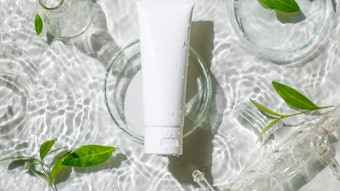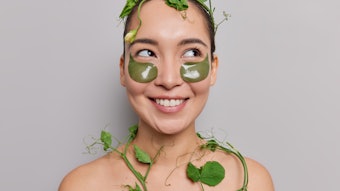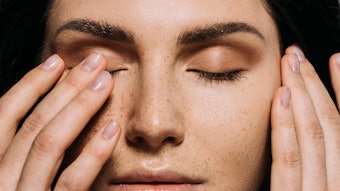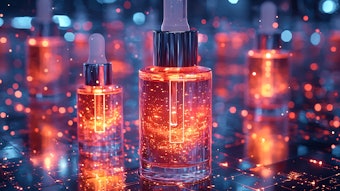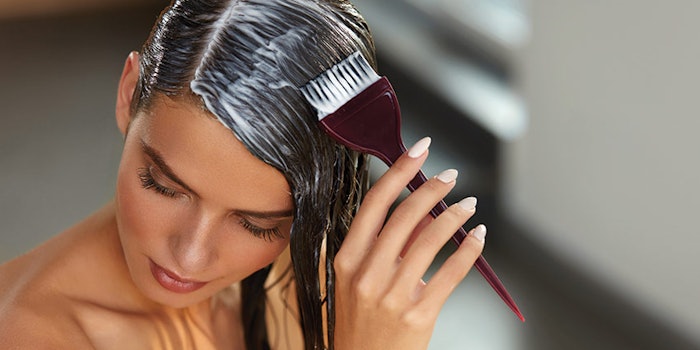
Click through to the July 2019 digital edition to read the complete article.
Consumers often determine hair health by thickness, strength and shine; a common detriment being split ends. Many individuals look to hair masks to address and correct this damage, be it a commercial product or a DIY remedy. One ingredient, fenugreek, has long been used in homemade hair solutions—it was commonly utilized in ancient Ayurvedic remedies to improve hair strength and shine while also benefiting scalp health.
Fenugreek seeds contain many components specifically beneficial to hair care. Notably, the component mucilage is a substance that conditions and protects the hair. When fenugreek seeds are made into a paste, it creates a gelatinous effect that when applied to hair, lays the broken cuticle down, strengthening the hair shaft and improving shine. Fenugreek also contains lecithin, which works as an emulsifying substance that also hydrates the hair and scalp, conditions the hair, fights dandruff and improves bounce and shine.1 Fenugreek is also well-known for being high in proteins and fiber1 and multivitamin B, and works as a dihydrotesterone (DHT) blocker. This last piece is significant to the value of fenugreek, as DHT is the major player in alopecia; therefore blocking it can prevent hair loss.2
While the Ayurvedic roots remain the same, today’s eco-extraction methods have made fenugreek more readily accessible and sustainable. The proprietary eco-extraction method used to derive the fenugreek in the present study is capable of concentrating seeds to their highest oil potency without the use of solvents or heat; typically, such processes are used to obtain natural extracts but this can degrade the quality of the oil. This eco-extraction method, in addition to bio-boosters, creates a more stable oil, free from oxidation.
The goal of the present study was to determine the efficacy of this ancient ingredient as a potential modern solution to hair damage. Here, six hair mask samples specially formulated to target different types of hair damage and containing a chassis with fenugreek were designed and studied. The chassis comprised a 2% mixture including eco-extracted fenugreek, karanja oil, medium chain triglycerides and the bio-boosters co-enzyme Q10, squalane and phytic acida.
These results were compared with those of a common Indian Ayurvedic treatment in which only a fenugreek paste or mask was used.
Ayurvedic Roots
A triangular, bitter legume with an Ayurvedic background, fenugreek (Trigonella foenum graecum, family Leguminoseae) is often harvested for its seeds and the leaves of its trees. Fenugreek seeds have a yellow color, bitter taste and potent, nutty smell. The seeds alone contain 7.8% oil and contain high concentrations of linoleic and oleic fatty acids,3 both of which are well-known to aid in skin care.4 Ayurvedic applications for this ingredient include solutions for digestive issues, cardiovascular disease and promoting milk production in lactating mothers,3 along with the treatment of alopecia, dandruff and skin diseases.5
To improve hair shine, reduce hair fall and remedy dandruff, fenugreek was traditionally used in a mask format in a weekly ritual. A paste was created by soaking fenugreek seeds for several hours before blending into a paste. Once the paste was the desired consistency, it could be applied to the scalp and hair as a mask and allowed to remain for at least one hour before rinsing in warm water.
Fenugreek Efficacy in the Literature
Many studies in India, Sudan and Indonesia have indicated extracted fenugreek has antifungal and antibacterial properties that fight the microorganisms that cause dandruff: Malassezia globose. In one such study, fenugreek was rendered to be as effective as synthetic chemicals in fighting dandruff, reportedly with fewer side effects.6
Click through to the July 2019 digital edition to read the complete article.
References
- Madhav, V. V. (2009). Ayurvedic Pharmacology and therapeutic uses of medicinal plants. New Delhi: Choukhambha Publications. 701.
- Smith, M. (2003). Therapeutic Applications of Fenugreek. Alternative Medicine Review, 8(1), 20-27.
- Sulieman, A. M., Ali, A. O., and Hemavathy, J. (2008). Lipid content and fatty acid composition of fenugreek (Trigonella foenum-graecum L.) seeds grown in Sudan. International Journal of Food Science and Technology, 43, 380-382.
- Essential Fatty Acids and Skin Health. Retrieved from https://lpi.oregonstate.edu/mic/health-disease/skin-health/essential-fatty-acids
- Gupta, A., Malviya, R., Singh, P. T., and Sharma, K. P. (2010). Indian Medicinal Plants Used in Hair Care Cosmetics: A Short Review. Pharmacognosy Magazine, 2(10), 361-364.
- Verma, V, Saxena, R, Garg, P, Sharma, S, Khanna, P, Singh, M. (2011). Effect of Germinated Seeds of Fenugreek on Malasseizia Furfur From Hair Dandruff. International Journal of Current Research, 3(4), 322-323.



